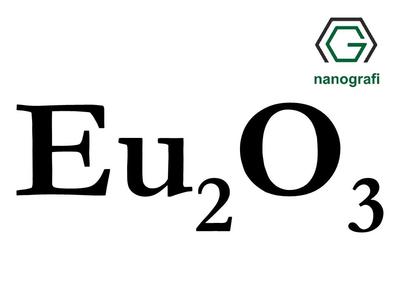Europium Oxide Nanoparticles/Nanopowder and Europium Oxide Nanopowder/Nanoparticle Applications
ropium Oxide and Its Chemical Properties

Europium Oxide (Eu2O3) is a chemical compound that consists of europium metal and oxygen.
uropium oxide has two common structures which are monoclinic and cubic. This compound has very high melting (2350 °C) and boiling (4,118 °C) points.
Europium Oxide may be formed by ignition of europium metal.
Applications of Europium Oxide Nanoparticles/Nanopowder 

Since Europium oxide nanoparticles/nanopowder shows high efficiency as a luminescent material , these nanoparticles/nanopowder may be used in color televisions and other color displays. In the production of specialty glasses, particularly those for use in lamps or with phosphorescent properties Europium Oxide nanoparticles/nanopowder are very useful. Europium dioxide nanoparticles/nanopowder can react with acids and at the end of this reaction Europium (III) salts can be obtained.
You may find Eu2O3(Europium Oxide) Nanoparticles/Nanopowder, 8-90nm, Purity 99.995%, Cubic by clicking the link below:
Comments
Post a Comment